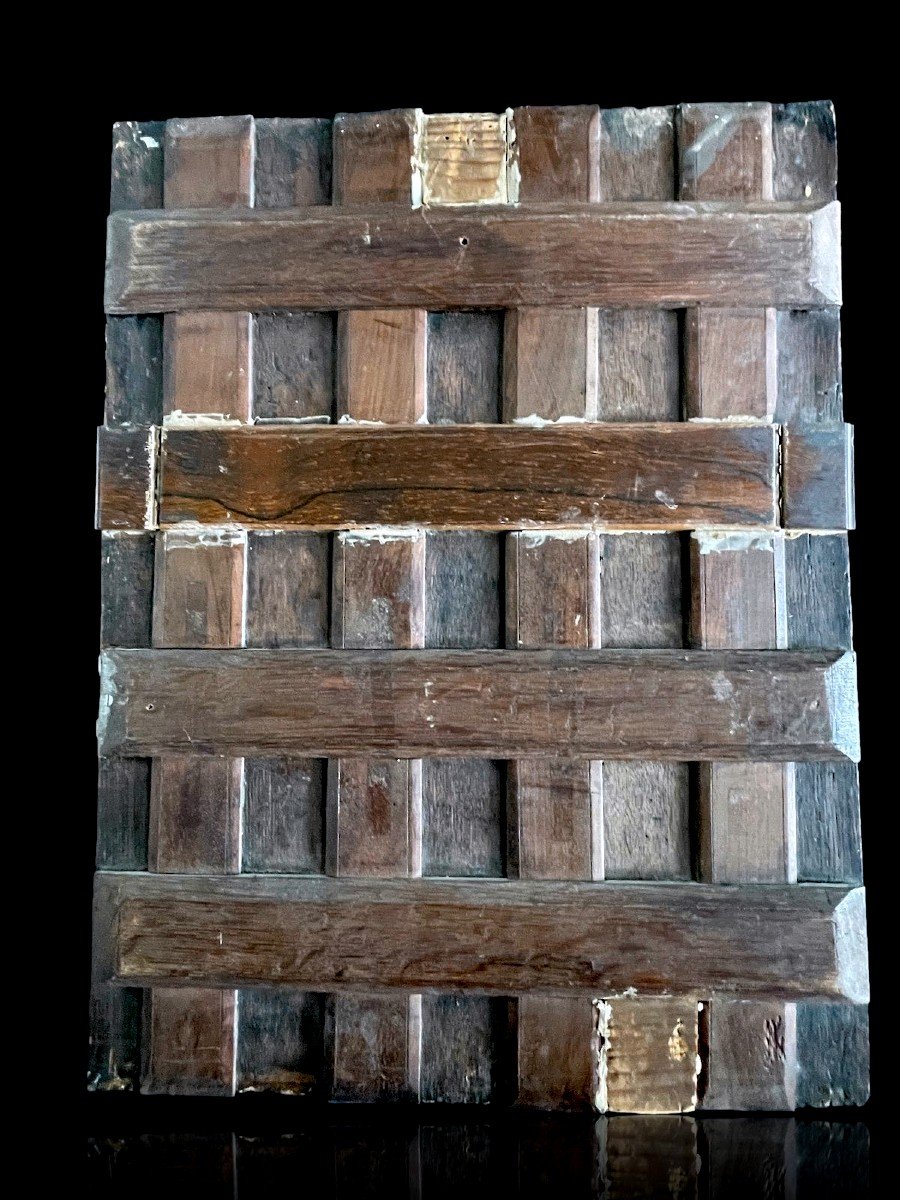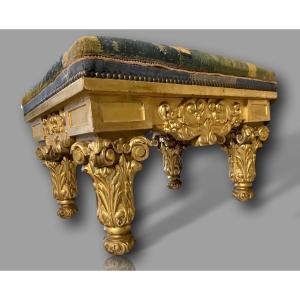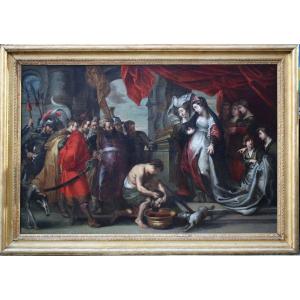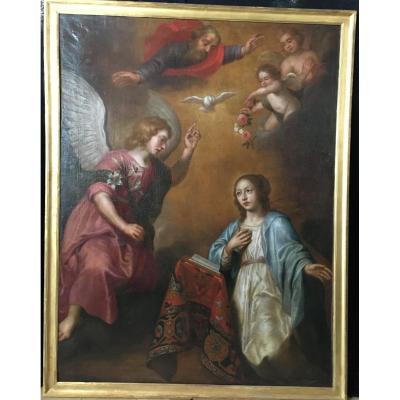A magnificent oil painting on parqueted oak wood panel, made by a follower of Joos Van Cleve, a great master of the Flemish Renaissance. This 16th century work, from the Antwerp school, captures with remarkable finesse the tenderness and serenity of the Virgin Mary.
The scene represents the Virgin Mary, her gaze lost in her dreams, imbued with infinite sweetness, holding the Child Jesus in her arms. Jesus, naked and covered in a simple white swaddling cloth, tenderly suckles his mother. Mary, dressed in a beige cape with a high collar, over a pleated red dress, stands in front of a piece of furniture. On it, an open book, an apple, two cherries, and an antique vase filled with beautiful flowers, add a rich symbolism to this composition. It is framed by a pair of heavy green velvet hangings, adding depth and majesty to the scene.
Dimensions:
Height: 56.5 cm
Width: 43.5 cm
Condition of the work:
The work is in excellent condition, testifying to careful conservation over the centuries. No restoration is to be considered, except for a very slight vertical crack that in no way alters the beauty and integrity of the painting.
Medium: Oil on parquet oak panel
Period: 16th century
Origin: Antwerp school, follower of Joos Van Cleve
Authenticity and quality:
This piece is an exceptional testimony to Flemish religious art, embodying both the spiritual devotion and the technical mastery of the artists of the time. The absence of major restoration and the finesse of the work make it a valuable acquisition for collectors of ancient art.
Shipping:
Careful shipping is provided, with quality packaging to ensure the protection of this work during transport, and ad Valorem insurance taken out with an Independent Company.
Joos van Cleve (also spelled Joos van der Beke) was a leading Flemish painter of the Northern Renaissance, active in the early 16th century (c. 1485–1540/41). Known for his sophisticated blend of Flemish traditions with influences from Italian Renaissance art, he became an important figure in the Antwerp school of painting. Here are some key details about his life and work:
Style and Influences
Flemish and Italian Synthesis: Joos van Cleve's work is characterized by his skillful combination of Flemish realism with Italian Renaissance techniques. He was influenced by the detailed realism of Jan van Eyck and Rogier van der Weyden, as well as the dynamic compositions and anatomical precision of Italian masters such as Leonardo da Vinci and Raphael.
Brilliant Use of Color: His paintings are known for their rich, luminous colors and delicate treatment of light, which added depth and emotional resonance to his religious scenes and portraits.
Realism in Portraiture: Van Cleve was particularly skilled in portraiture, capturing the subtle nuances of his subjects' expressions and clothing, bringing a sense of individuality and presence to his sitters.
Notable Works
The Virgin and Child: He created numerous depictions of the Virgin and Child, often showing the Virgin Mary tenderly interacting with the infant Jesus. These works are famous for their warm and detailed execution.
The Last Judgement: One of his famous religious paintings is "The Last Judgement", which reflects his detailed narrative style and his mastery in rendering complex religious themes.
Portrait of a Man (possibly Francis I of France): This work illustrates his approach to portraiture, emphasizing both the elegance and psychological depth of his subject.
Contribution to the Antwerp School
Joos van Cleve was a key member of the Antwerp Mannerists, a group of painters known for their vibrant colors, intricate details, and imaginative compositions.
His workshop was very prolific, producing many religious altarpieces, private devotional images, and portraits that were in demand throughout Europe.
#AncientArt #FlemishPainting #JoosVanCleve #FlemishRenaissance #ReligiousArt #MadonnaAndChild #AntwerpSchool #ArtCollection #16thCenturyPainting #SacredArt





























 Le Magazine de PROANTIC
Le Magazine de PROANTIC TRÉSORS Magazine
TRÉSORS Magazine Rivista Artiquariato
Rivista Artiquariato
